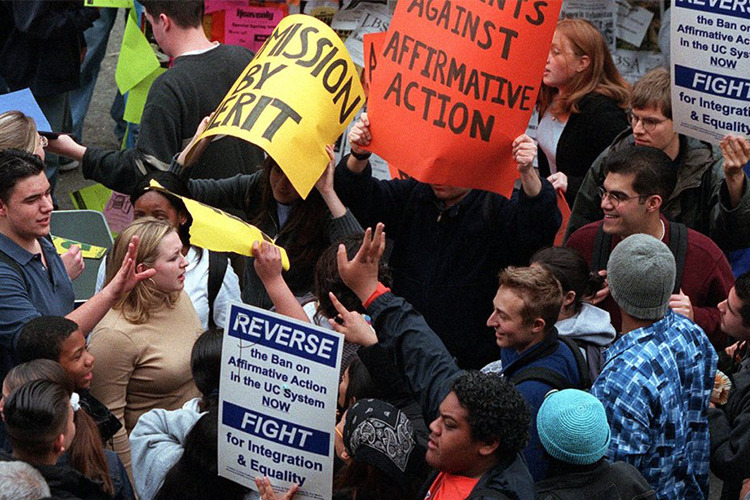
Students on both sides of the affirmative action conflict argue with one another. photo by Jakub Mosur
The Supreme Court challenges a landmark case that has encouraged diversity in schools and allowed for more minority success.
In October of 2022, the affirmative action policies at Harvard and University of North Carolina that have allowed for people of color to overcome educational oppression are going to be challenged in the Supreme Court. Admission policies at Harvard and UNC that have previously looked at race as a key factor to increase diversity in universities have been an increasingly debated issue and many strong opinions are held on both sides. Arguments against affirmative action policies are based on the belief that no one should be given any opportunities based off of their skin color, whereas arguments for affirmative action policies are based on the fact that people of color have been oppressed for centuries and deserve a chance to rise up despite the factors working against them in society. A ruling against affirmative action would likely reduce the number of Black and Latino students at selective colleges and graduate schools while more Asian American and white students would gain admission instead.
The cases are being brought to the Supreme Court by a group called Students for Fair Admissions, which was founded by Edward Blum, a conservative entrepreneur who has organized many lawsuits against race-conscious policies. “Every college applicant should be judged as a unique individual, not as some representative of a racial or ethnic group,” said Blum in an interview with the New York Times. Unsurprisingly, Harvard president Lawrence S. Bacow, feels differently. “[This challenge] puts at risk 40 years of legal precedent granting colleges and universities the freedom and flexibility to create diverse campus communities,” Bacow said. For four decades, Harvard has been administering affirmative action policies to ensure that college campuses and communities are racially and ethnically diverse. However, all of those policies may go to waste when they are challenged in the Supreme Court this October.
Though the affirmative action policies are only being challenged at Harvard and UNC, many advocates for affirmative action are afraid for what the future holds. Many believe that challenging the policies at Harvard and UNC is only the beginning; they believe that this Supreme Court case is an indication that the administration of affirmative action is going to come to an end.
There are currently nine states in which affirmative action policies are not utilized: California, Florida, Michigan, Washington, Arizona, Nebraska, Oklahoma, Idaho, and New Hampshire. The effects of the lack of affirmative action policies in these states can clearly be seen through university admissions. In 1992, minority applicants were nearly 20% more likely to be admitted into colleges than a non-minority person. However, after the affirmative action policies were removed from universities in those states in 2004, the schools experienced a 23.3% decrease in the number of minority students that applied. This 23.3% decline in minority applicants is major in comparison to the 1% decline in admission rates for minority students in the remaining states that still institute affirmative action policies.
As expected, emotions are high and tensions will continue to rise as October draws closer and the future of affirmative action is drawn into question. Minority groups that have faced oppression for centuries may now have to overcome educational barriers that a non-minority person does not have and diversity in universities and graduate schools could regress if affirmative action policies are revoked. If Blum and Students for Fair Admissions succeed, white college applicants will most likely be the beneficiaries, allowing the vicious cycle of oppression and discrimination to continue.